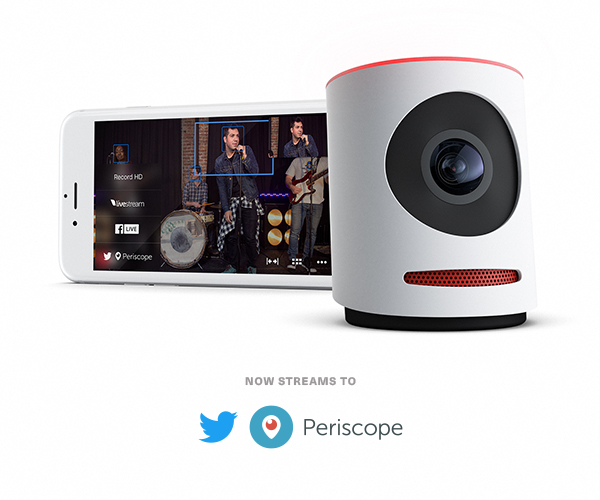Confirming earlier reports by The Information and here at TechCrunch, Twitter officially announced the launch of a new tool for live video aimed at larger media publishers and broadcasters. The Producer API, as it’s called, will allow professional publishers to connect their equipment to Twitter in order to stream live video directly to its network.
Twitter had previously launched Periscope Producer last fall, which allows creators to live stream video content from devices like professional cameras, satellite trucks, VR headsets, desktop streaming software and elsewhere. This was a step up from Periscope’s earlier value proposition — individual users “going live” from their phones to stream straight to Twitter. Instead, the software offered a way to use professional equipment in order to stream higher-quality, more polished videos.
Twitter says that since Periscope Producer’s launch, it saw the total number of Producer broadcasts nearly double quarter over quarter.
The new API is meant to expand upon that earlier offering, to make the Producer service easier to use for publishers and broadcasters. Instead of having to connect external hardware, software, cameras and web services via the app, the API lets third-party applications authenticate Periscope accounts, configure streams, start and stop broadcasts and publish live video to Twitter.
Along with the news of the API, Twitter announced that Telestream (Wirecast software), Livestream (Mevo camera), Switchboard Cloud (web platform), and Teradek (video encoders and software applications) as beta API partners who can help broadcasters use the new technology in various ways.
For example, Wirecast’s software lets broadcasters go live from live camera feeds, phones, computer desktop or web services, then add elements like live switching, animated titles, transitions and lower thirds. Meanwhile, the Mevo camera can send live video to Twitter and Periscope anywhere there’s Wi-Fi or an LTE signal. Switchboard’s Cloud lets broadcaster publish to Twitter and Periscope, as well as other social networks.
Other partners listed on Periscope’s page include Brandlive, Grabyo, LiveU Solo, Giroptic iO 360, Make.tv, NewTek, Inc., Telescope and Vidpresso.

More broadly, the idea with the new API is to open the doors to bigger companies that can help Twitter fill its network with interesting things to watch — giving users more of a reason to launch the Twitter app, and giving advertisers more of a reason to pay for placements within the video content.
To date, Twitter has been negotiating with larger publishers and broadcasters in a series of one-off deals to expand its lineup of live video.
This has included a number of sports deals, as with the NFL for its Thursday night games, as well as with Pac-12 Networks for university sports, the NBA, the MLB, the NHL and, most recently, the NLL (lacrosse). It has also partnered with those more in the entertainment space for things like e-sports competitions and red carpet events, as well as with news organizations like PBS and CBS for political coverage, to name a few.
But with this API, Twitter is throwing the doors open to any broadcaster that wants to stream to Twitter in order to raise brand awareness or boost its audience, without having to first negotiate with Twitter for the rights to live stream to the network.
Essentially, Twitter’s new Producer API is an answer to Facebook’s own Live API, which is today offered to news organizations, brands, celebs and other developers as a means of live streaming video to Facebook on mobile and web.
Twitter’s entry could have some appeal to those in the live events business or news publishers, because Twitter’s brand is associated with breaking news and other real-time content more so than Facebook and other social networks.
Despite this move, Facebook will remain fierce competition for Twitter as the live streaming space heats up. The social network recently struck a deal with Major League Soccer and Univision to bring live soccer games to its network and has paid top publishers like CNN and BuzzFeed to create live content on its platform.
Those interested in early access to the Producer API can sign up for the private beta here.
